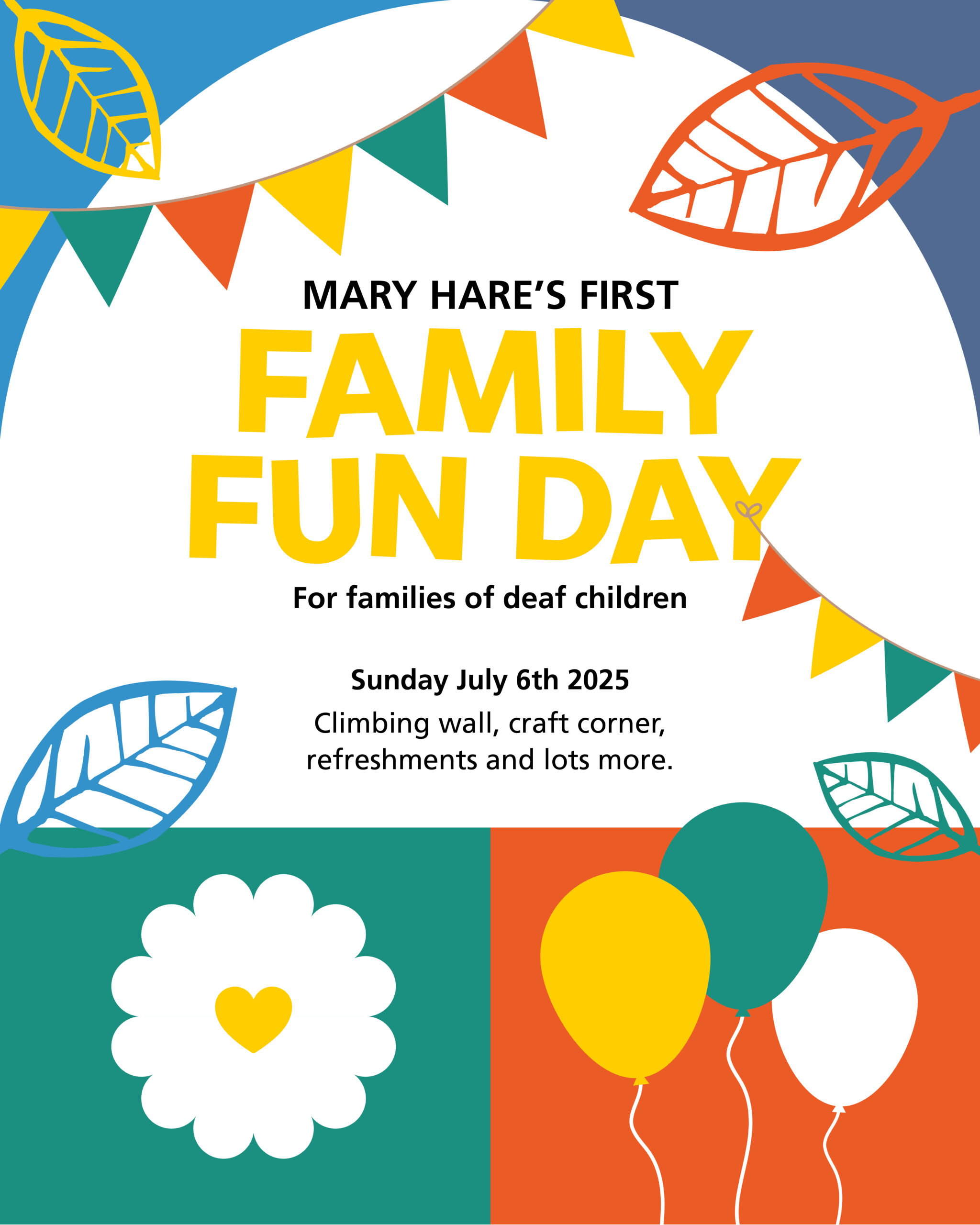6.1. Hearing aids (HAs)
Section 6.1 author – Stuart Whyte
Following the assessments carried out by paediatric audiology, once a hearing loss has been diagnosed, there will be a discussion regarding fitting hearing aids. The ultimate goal is for the child or young person (CYP) to access speech sounds as this will provide the best chance for them to develop their speech skills.
There are three main manufacturers that provide paediatric hearing aids through the National Health Service (NHS) within the UK (Danalogic, Oticon, and Phonak) although other brands may be issued. Due to hospital tender and procurement policies, audiology departments tend to use one specific manufacturer. As a result, the type of hearing aid issued will be dependent upon the level of hearing threshold and the audiology setting.
There are two main types of acoustic hearing aids that can be issued:
1. Behind the ear aid (BTE):
This is the most frequent type of aid issued on the NHS for paediatrics. The aid consists of the microphone, volume button, mechanical switches, and battery within a case, which is positioned behind the pinna. The ear hook supports the tubing that is attached to the ear mould. The mould needs to fit snuggly into the ear canal. It is worth acknowledging that condensation can build up in the ear hooks; as part of the routine maintenance, this needs to be considered.
Another version of the BTE hearing aid is the open fit/slim tube hearing aid. The aid sits in the same way, behind the pinna, but the tubing connects directly to the aid so there is no ear hook.
Receiver in the canal (RIC):
This aid looks similar to a BTE aid and sits on the ear in a similar way. With this aid, the casing holds the microphone, amplifier, and processor. The receiver/speaker is situated in the dome and fits directly into the ear canal. The casing and the dome are connected by a thin wire. These aids tend to be issued for high frequency losses, mild, and mild to moderate losses.
2. In the ear aid (ITE):
This aid has all the components (microphone, amplifier, processor, and receiver) within the casing including the battery compartment. The aid is shaped like an ear mould and is designed to fit in the ear canal. This type of aid tends to be used by adults as their ear canal has completed its growth. It is less likely to be used even with older children as this aid is rarely offered on the NHS.
Paediatric Hearing Aids on the NHS
The main manufacturers for paediatric hearing aids on the NHS are Danalogic (GN Resound), Oticon and Phonak. To gain more detailed information on each specific model please select the links that take you directly to Connevans dedicated ‘My Hearing Aid‘ section of their website:
After selecting the specific model, the webpage will help you decide on the right accessories and assistive listening technology you need for that model.
The hearing aid needs to have appropriate ear moulds and tubing to complement the amplification provided by the aid.
Ear moulds for hearing aids
Ear moulds hold the tubing that connects to the BTE hearing aid. They can be seen in a range of styles and colours, but whatever they look like, their purpose is the same, ensuring the amplified sound travels through the ear canal. For this to happen, the mould needs to fit in the concha and ear canal snuggly, thus preventing any leakage of sound. Ear moulds are made to fit each individual person.
Ear moulds tend to be made from soft acrylic, hard acrylic, or silicone. Hypo-allergic material can be used, but it must be requested by the audiologist. Ear mould impressions are made either by the audiologist or, in some areas, by educational audiologists. Accredited training is required to carry out impressions. This is split into children under the age of five, and children aged five and over. The impressions are then sent away to be made into ear moulds. Once completed, they are sent back to the audiologist for fitting or directly to the family. The process takes approximately three days.
The soft acrylic is more flexible when putting it in and taking it out of the ear, making it easier for younger children, but equally more prone to wear and tear. Alternatively, the hard acrylic moulds are more hard wearing, but being more ridged means they can be more challenging to put in.
The style of moulds is wide and varied and will be dependent upon the hearing level of the child. The most typical mould is known as the ‘full shell’. This mould will fill the entire concha creating a complete seal. This mould can be used for all hearing needs but is generally used for children with moderate to profound hearing levels.
The ‘skeleton’ mould is like a full shell but with the middle removed (hence the name skeleton). The seal around the concha is still created, but the opening allows for ventilation or the flow of low frequency sounds. This style of mould tends to be used for mild to moderate or high frequency hearing levels.
Further reading on ear moulds:
Mary Hare hearing services – Arlington Laboratories product guide 2020
What Are Earmolds, and How Do They Work? – Davis Audiology (website link broken)
BSA – Taking an Aural Impression (visit the BSA website via this link for most recent publication)
Tjaudiology (BSA accredited training courses)
Domes for slim tubes
An alternative to ear moulds are domes. Although not custom made, their function is the same in that they need to direct the sound from the microphone and tubing through the ear canal. Just like ear moulds, they need to fit well in the ear canal, be comfortable for the user, and not create any feedback. Domes can be purchased ‘off the shelf’ directly from reputable companies such as Connevans. As the domes are not custom fit, they can be obtained in different sizes. It is therefore important to use the correct size to fit the ear canal snuggly. There are different types of domes available, so it is important to be aware of the role of each type, and which hearing aids and slim tube use which dome:
Image source – Oticon
Open domes
These domes tend to be smaller. They have holes for ventilation and to allow sound to pass through the ear canal more naturally. These will, more generally but not exclusively, be used for mild or high frequency deafness.
Closed domes
These domes look similar to the open domes, but they do not have any holes. This will reduce the possibility of low frequency sounds escaping and so allows all the sounds to be amplified.
Double domes
These look like two domes and are also referred to as ‘power domes’. They create more occlusion in the ear canal, fitting snuggly and eliminating any leakage of amplified sounds. This type of dome is commonly used for moderate to severe hearing levels.
For further information refer to: www.connevans.co.uk
Tubing
The tubing connects the hearing aid to the ear mould or dome. The main function is to transfer the amplified sound from the hearing aid directly into the ear canal with no leakage of sound or loss of audio quality.
There are different types of tubing available; the appropriate type will be dependent upon the hearing levels and the type of hearing aid that has been issued. The tubing tends to be clear plastic as this makes it easier to identify any debris and condensation that may be in it. Some tubing, however, can be purchased in a range of colours, which may encourage the child to wear their hearing aids.
Standard tubing
This is the most typical type of tubing used with most hearing aids and ear moulds. It comes pre-bent and needs to be cut to size to allow the hearing aid to sit correctly on the child’s ear.
The tubing in hearing aids for babies is often ‘double bent’ as this helps the hearing aid sit better on their small ears. It is normally used by the audiologist rather than Qualified Teachers of Deaf Children and Young People (QToDs).
Thick wall tubing
This tubing has similar internal dimensions to standard tubing (approximately 2 mm) but the tubing wall will be thicker. This tubing is used primarily for ultra power (UP) aids as the thicker wall allows the powered amplified sound to travel more smoothly through the ear.
Stay-Dri tubing
For children that experience high levels of condensation in their tubing, Stay-Dri tubing can be used. Both the external and internal dimensions are similar to that of standard tubing, but the material used has a low co-efficient thermal conductivity which helps reduce the condensation.
Open fit/slim tubes
This tubing is a complete unit that can be either screwed or pushed on to the hearing aid case. As the name suggests, the tubing is thin, with only a 0.9 mm internal diameter, it is also more rigid than the standard tubing. It comes in five different lengths, and it is important to ensure the correct length is fitted. If the tubing is too long or too short, the hearing aid will not sit comfortably on the child. To determine the correct size, use the tool.
The tubing will become hardened and/or brittle over time and will need replacing. It should be checked daily and kept as clean as possible.
Further information on tubing:
Your hearing helper website – Know Your Hearing Aid Tubes
Batteries
Most hearing aids will be powered by button batteries. There are at least five different sizes available, but NHS hearing aids tend to use three main types. They are colour-coded and have a reference number to indicate which one is needed. This is also marked on the inside of the battery door on the hearing aid (unless it has been changed, for example, to a tamperproof door).
The batteries used in paediatric hearing aids are:
| Reference number | Packet colour | Purpose |
| 675 | Blue | These are the largest and will be used for aids that require more power, such as UPs.
Note that they are not suitable for Cochlear Implant Sound Processors that require 675i batteries. |
| P13 | Orange | These are slightly smaller and used in a range of hearing aids. |
| 312 | Brown | These are a similar size to the P13 but thinner. |
These batteries are zinc-air which means they are air activated. Once the protective seal has been removed the battery will start working. The lifespan of the batteries is dependent upon the strength of the hearing aid. They will generally last around a week before needing to be replaced, but this is greatly reduced if a radio aid is also used or the hearing aid is connected wirelessly to other devices, such as a mobile phone or tablet.
These batteries are disposable, in that once they have expired, they can no longer be used. It is important that as they contain zinc, they are disposed of appropriately and not just thrown in the bin.
Button batteries are dangerous if swallowed. The hearing aids can have a tamperproof battery door fitted, which will help prevent the child from being able to open the battery door if they remove their hearing aid. Even with a tamperproof door, extreme care should be taken when removing and replacing button batteries.
To reduce any possibility of children swallowing button batteries, paediatric hearing aids are available with rechargeable batteries. These aids have lithium batteries that are enclosed within the casing of the aid and need to be placed in a charger, preferably overnight, to charge.
Further information on batteries:
NHS England – National patient safety alert
Child accident prevention trust – button battery safety
Phonak – fitting a tamperproof battery door Phonak
Oticon – opening tamperproof battery door
Considerations for QToDs:
- Supporting the CYP and family when hearing aids are first issued.
- Supporting the CYP to take ownership of their hearing devices, for example, Audiology Curriculum or Personal Understanding of Deafness (PUD).
- Supporting families with new babies as they will require frequent ear mould impressions as the baby grows.
- It is important to inspect and check the ear moulds regularly for tears and report these to audiology immediately.
- Supporting the family and school setting to practise a good cleaning routine for the moulds and tubing. (example document)
- Tubing locks can be fitted onto the ear mould. This will prevent the tubing from being pulled out, but it also means that the child will need to go to audiology to have the tubing replaced.
- If disposable batteries are used, ensure the family or educational setting have spares.
- As children are connected to more wireless devices, it is worth considering which batteries are used. Ideally, they should be ‘wireless approved’. Follow the link, select the required batteries, and scroll down to the ‘description’ where it will state if they are wireless approved.
- When a child has been issued with rechargeable hearing aids, be aware there is a possibility that the aids have not been charged and so are not working. This will mean the child will be unable to access their learning. Consider arranging for the educational setting to have a charger on site.
Next pages in this section
6.2 Bone conduction hearing devices (BCHD)
6.4 Assistive Listening Technology (ALT) – radio aids and proprietary remote microphone systems
6.7 Other hearing technologies
Other sections
- Section 1 Anatomy and physiology of the ear
- Section 2 Aetiology and types of deafness
- Section 3 Auditory perception and hearing testing
- Section 4 Acoustics and physics of sound
- Section 5 Listening skills and functional hearing





